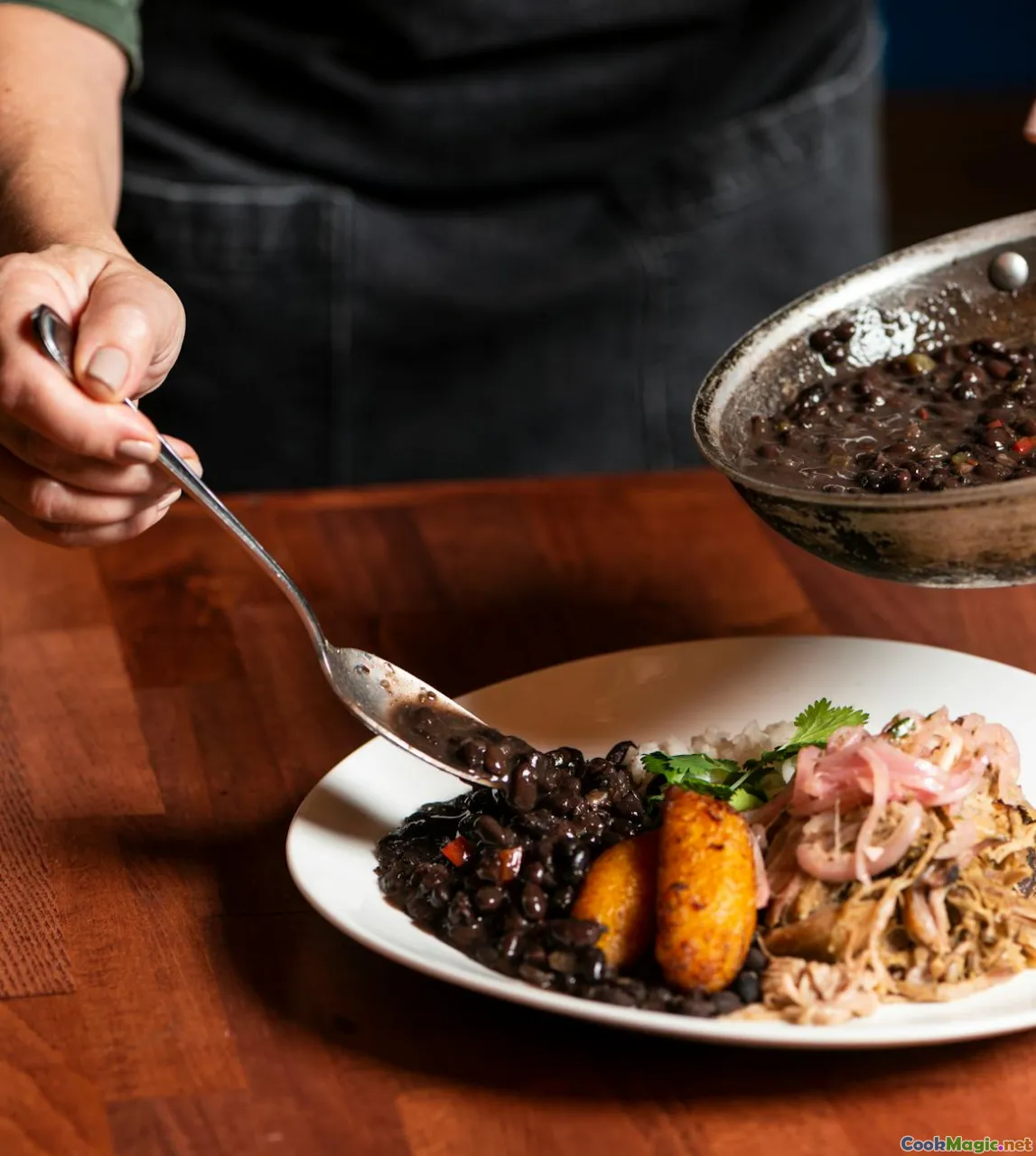The Basics of Cuban Sofrito and Its Uses
8 min read Discover the vibrant world of Cuban sofrito—its rich history, ingredients, and essential role in creating authentic Cuban dishes that excite the senses. April 19, 2025 08:55
The Basics of Cuban Sofrito and Its Uses
Imagine walking into a bustling Cuban kitchen where the air is fragrant with a symphony of aromas—garlic, peppers, herbs—melding into a heady, inviting perfume. This is the magic of sofrito, the soul of Cuban cooking, a foundational sauce that layers flavor into countless dishes. But beyond its aromatic allure, sofrito embodies a cultural heritage rich with history, emotion, and tradition. Today, we delve into the vibrant world of Cuban sofrito—its origins, ingredients, preparation, and the myriad ways it transforms humble ingredients into culinary masterpieces.
The Cultural and Historical Significance of Sofrito in Cuba
Cuba’s culinary landscape is a mosaic of indigenous, Spanish, African, and Caribbean influences. Sofrito, as practiced in Cuba, is more than just a cooking base; it’s a reflection of centuries of cultural fusion. Historically, Cuban cooks have used sofrito to preserve the essence of fresh ingredients, infusing dishes with depth and complexity.
In many Cuban households, making sofrito is almost a ritual—an act passed down through generations, often made in large batches to serve as a flavor foundation for weeks of cooking. It’s a testament to the resourcefulness and ingenuity of Cuban cooks, who, despite economic hardships, found ways to maximize flavor using simple, locally available ingredients.
What Is Cuban Sofrito?
At its core, Cuban sofrito is a blend of aromatic vegetables, herbs, and spices finely chopped or blended into a fragrant paste. Unlike Italian or Spanish sofrito, which often features tomatoes prominently, Cuban sofrito tends to emphasize green peppers and herbs, creating a vibrant, greenish-hued mixture.
Core Ingredients
- Aromatic Vegetables: Green bell peppers, onions, and garlic form the backbone.
- Herbs: Fresh cilantro, culantro (recao), and sometimes parsley lend a bright, herbal note.
- Spices: A touch of black pepper, cumin, and, occasionally, bay leaves.
- Acid and Oil: A splash of vinegar or lime juice and a good drizzle of olive or vegetable oil help meld the flavors.
The resulting paste is versatile, offering a fresh, zesty aroma that awakens the senses.
How to Make Authentic Cuban Sofrito
Creating sofrito is both an art and a science, with variations across households. Here’s a traditional approach:
Ingredients
- 2 large green bell peppers, seeds removed
- 1 large onion
- 4 garlic cloves
- 1 bunch cilantro
- 1 bunch culantro (if available)
- 2 tablespoons olive oil
- 1 teaspoon cumin
- 1 tablespoon vinegar (or lime juice)
- Salt and pepper to taste
Instructions
- Prepare the Vegetables: Wash all fresh herbs and vegetables thoroughly.
- Chop or Blend: In a food processor, combine the bell peppers, onion, garlic, cilantro, and culantro. Pulse until finely chopped but not a complete puree—aim for a chunky, textured paste.
- Cook the Sofrito: In a skillet, heat the olive oil over medium heat. Add the chopped mixture and sauté for about 5-7 minutes until fragrant and slightly softened.
- Season and Finish: Add cumin, salt, pepper, and vinegar. Cook for another 2-3 minutes to allow flavors to meld.
- Cool and Store: Let it cool, then store in an airtight container in the refrigerator for up to a week or freeze in portions for later use.
Tips for Success
- Use fresh herbs for maximum flavor.
- Adjust the amount of vinegar or lime to suit your taste.
- For a smoother sauce, blend ingredients until fully pureed.
Uses of Cuban Sofrito in the Kitchen
The beauty of Cuban sofrito lies in its versatility. It serves as a flavor enhancer, a marinade, and even a base for soups and stews.
Classic Dishes Enhanced by Sofrito
- Ropa Vieja: Shredded beef stew that becomes rich and savory with a generous spoonful of sofrito.
- Picadillo: Ground beef hash with olives and raisins, where sofrito provides a fragrant, savory foundation.
- Arroz con Pollo: Chicken and rice dish that benefits from the depth of flavor added during cooking.
- Black Bean Soup: A touch of sofrito elevates simple beans into a hearty, aromatic meal.
- Seafood Stews: Sofrito complements the delicate flavors of shrimp, fish, and shellfish.
Beyond the Basics
Sofrito can also be used as a marinade for meats, a stuffing for vegetables, or stirred into rice or beans for an extra layer of flavor. Its bright aroma and vibrant taste make it a kitchen staple that transforms everyday ingredients into authentic Cuban delicacies.
Personal Reflections and Cultural Insights
Growing up in a Cuban household, I’ve always associated the aroma of sofrito with family gatherings and Sunday dinners. My grandmother's version was a symphony of green peppers, cilantro, and garlic, simmering on the stove as she prepared a pot of arroz con pollo. That smell was more than just food—it was a warm invitation, a sense of community, and a connection to our roots.
In Cuba, sofrito isn’t just about taste; it’s about preserving a way of life—where food is love, history, and resilience all rolled into one aromatic spoonful.
Final Thoughts
Mastering the art of Cuban sofrito opens up a world of authentic flavors and culinary traditions. It’s a humble yet powerful ingredient that embodies the soul of Cuban cuisine. Whether you’re recreating classic dishes or experimenting with new recipes, a well-made sofrito is your secret weapon for vibrant, soulful cooking.
So next time you chop your vegetables, think of the generations of cooks who have used this simple, flavorful base to create magic in their kitchens—and consider how you can carry on that delicious tradition.
¡Buen provecho!









